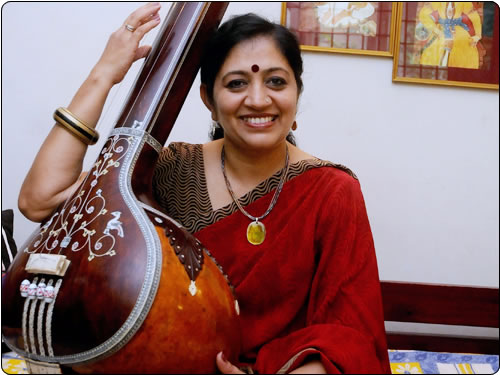Theory... with a demo
The Margazhi music season is not just about kutcheris, Bharatanatyam recitals, bhajans, and harikathas. There are panel discussions, lecture demonstrations (lec-dem), and pattimandrams (debates), which engage with the audience, says Carnatica’s founder and managing trustee KN Shashikiran, who has been instrumental in organising similar sessions over the last several years.
All major musical conferences organised in India and abroad aim to connect with the audience. That’s what lec-dems do. There’ll be a moderator and a set of panelists who speak on the topic assigned, which goes for an hour. After that, the floor opens for a discussion.
“Lec-dems these days dwell upon some of the practical aspects of classical music,” he adds. “Over these years, the festival has become a platform for cultural exchange. We have hundreds of NRIs coming in annually, besides the retired crowd and research scholars.”
This year, almost every renowned artiste will present a lec-dem including Priya Sisters (Shanmuga Priya and Hari Priya...for the first time), RS Jayalakshmi, Suguna Varadachari, S Sowmya, Neyveli Santhanagopalan and RK Shriramkumar. “Four or five years ago, A-listers weren’t doing lec-dems. Slowly, they have realised the importance of communicating with the audience and understanding what they want,” he adds.
Lec-dems aren’t new. They were relatively popular even around the 90s. The Music Academy has had a big share in encouraging senior musicians and musicologists in these sessions then. The other sabhas picked up the trend later. “Earlier, topics were more academic, but now they’ve become interactive,” explains Shashikiran.
Also, he quickly adds, "Up next, there's a lec-dem on the role of violin and women instrumentalists by Lalgudi Vijayalakshmi, Dr Hemalatha and Dr Narmada. There’s a perception that male instrumentalists don’t want to play for female vocalists. Even a female vocalist prefer a male violinist. Such topics are socially relevant too!"
Renowned ghatam player Karthick enjoys lec-dems as they enable him to opine about certain ragas, talas, lyrical compositions. “I’m presenting three lec-dems this month. One of them is about the kutcheri format and dharma. The other is titled ‘global layamatrix’ featuring American vocalist Loire Cotler, American percussionist Glen Velez, KV Gopalakrishnan (kanjira) and Raman (morsingh). We’ll discuss how accompanying instruments enhance the quality of concerts. The third will be with Aruna Sairam where we discuss the form and structure of abhangs. In fact, I consciously bring in the references of AR Rahman, Ilaiyaraaja, and Bollywood music wherever necessary to make it easy for the audience,” he says.
Karthick believes that lec-dems help rasikas appreciate Carnatic genre from basics to concert level. “When I posted my kutcheri schedule on Facebook, somebody asked about lec-dems. That shows how popular they are. I don’t get into the technicalities of music unless required. I make sure an average rasika enjoys my session. Lec-dems provide an opportunity to discuss things that usually go unnoticed during kutcheris,” he elaborates.
Vijayalakshmy Subramaniam and Aruna Ranganathan will convene ‘musical musings’, an interactive session from December 16 to 25 at Rasika Ranjani Sabha, Mylapore. Some of the topics include neraval and sanchari in music and dance, ragas handled by Saint Thyagaraja, excerpts from Walajapet notations, so on. Says Vijayalakshmy, “Both thematic kutcheris and lec-dems need an extensive amount of research. I want my rasikas to come prepared because they also have the responsibility to make the session engaging. The purpose of attending a lec-dem is that next time you can appreciate a concert better. The onus lies on the artistes to strike a chord with the audience.”
Vocalist Sriram Parasuram, who’ll present a lec-dem on voice aesthetics in Carnatic and Hindustani music, says sabhas provide rasikas with something new every year. “Forty years ago, lec-dems existed, and performances took a backseat. That happened due to sponsors, the intervention of corporates and media. Now, it’s just making a comeback like a vicious cycle. Present-day audiences have the urge to know everything about music. They attend these sessions, and try to indulge in quality conversations with artistes.”
Lec-dems in dance
Bharatanatyam artiste and granddaughter of SK Rajaratnam Pillai, Nrithya Pillai says, traditional dancers never felt the need to showcase their abilities in the past. “When I was a student, I never questioned my gurus. Whereas, the present day generation wants to learn, analyse, question, internalise, execute and discuss dance,” she adds.
(The piece was originally written for The New Indian Express)



Comments
Post a Comment